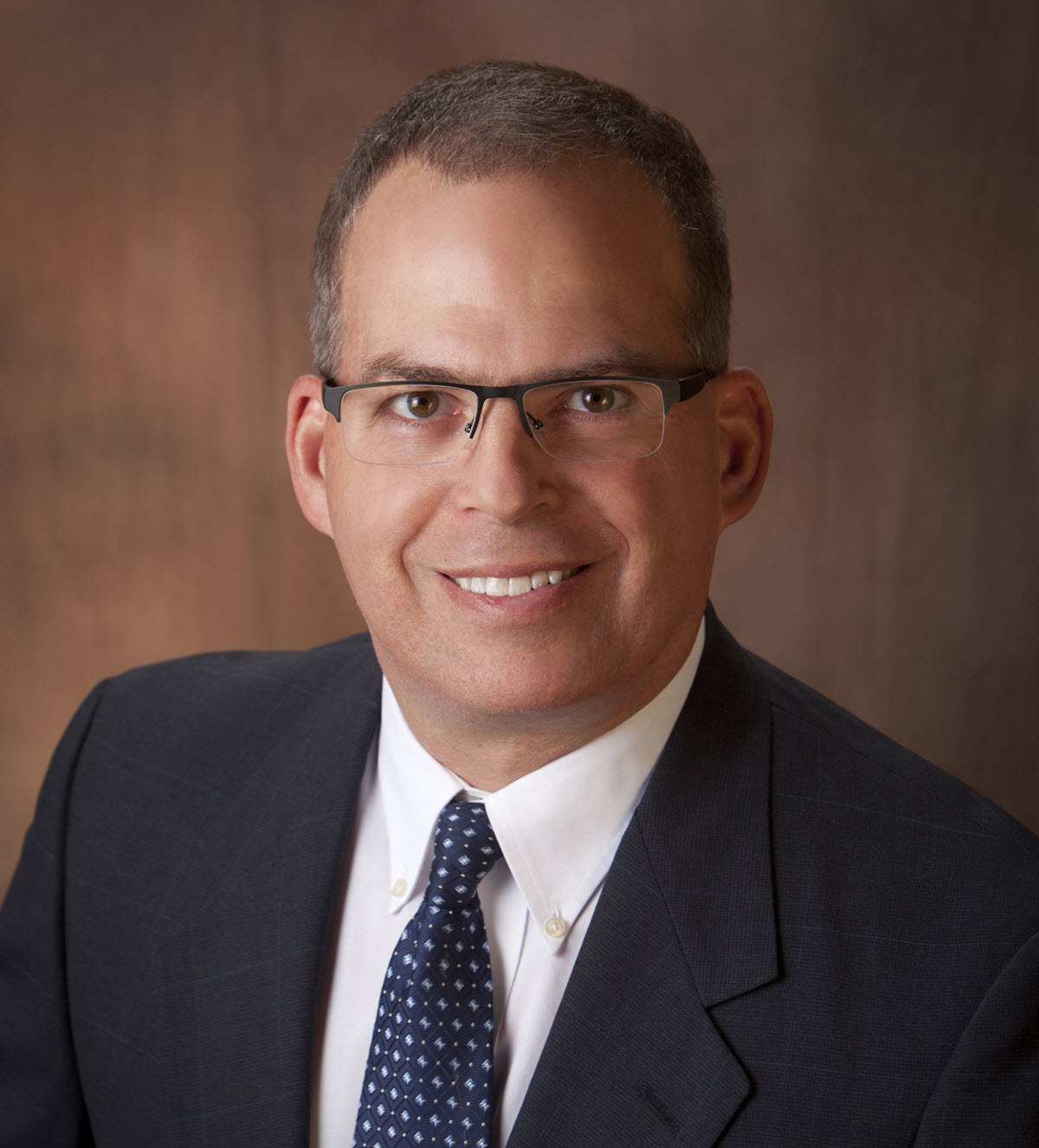In our Ask a Doc series, we sit down with physicians and other clinical experts, including those at Allegheny Health Network (AHN), for a chat on an important health topic. In this post, we talk about the opioid epidemic and substance use disorders with Dr. Caesar DeLeo, vice president and executive medical director at Highmark Health.
Opioid use disorder is a chronic disease that alters brain chemistry. Unfortunately, it’s often treated like a choice or moral failing. Individuals and families dealing with opioid use disorder can face barriers to diagnosis and treatment because of stigma.
Highmark Health takes a comprehensive approach to substance use disorder, including opioid use disorder, that focuses on primary prevention, safe prescribing, high-quality treatment, community supports and combating stigma. These efforts reduced opioid-related overdoses among key health plan member populations in Pennsylvania by about 20% over a three-year period. In the same period, 23% fewer members were newly prescribed opioids, and there was a 20% increase in the number of members who received medication-assisted treatment after being diagnosed with, or brought into treatment for, opioid use disorder. Medication-assisted treatment is part of a high-quality, evidenced-based approach that combines multidisciplinary care team support with medications that allow individuals to stop abusing opioids without experiencing powerful drug cravings or severe withdrawal symptoms.
To learn more about this important topic, I spoke with Dr. Caesar DeLeo, vice president and executive medical director of strategic initiatives at Highmark Health.

Dr. Caesar DeLeo, vice president and executive medical director, strategic initiatives, Highmark Health
Kendyl Ferrara: How did we end up with an opioid epidemic?
Dr. Caesar DeLeo: The opioid epidemic arose out of the intersection of disease risk, substance-use chemical changes in the brain chemistry, and the availability of substances in the environment (opioids) which trigger these changes, commonly called addiction and more appropriately referred to as opioid or substance use disorders.
Pharmaceutical companies in the 1990s influenced medical associations and physicians to overprescribe opioids to patients, with a mindset that pain should never be present. Because opioids heavily affect chemical changes in the brain, they often lead to increased craving for opioids and desire to avoid withdrawal symptoms. As a result, you see increases in opioid addiction and overdoses since the late 1990s.
Kendyl Ferrara: What sparked your passion for wanting to lead change in fighting the opioid epidemic?
Dr. Caesar DeLeo: I’m a physician with a diverse background, having worked in many settings in the health care delivery system and managed care. What motivates me is the magnitude and degree of the opioid use problem that’s worsening in this country, the stigma and disenfranchisement of those affected, and I’d say a sense of injustice in terms of the exploitation of people for profit by big pharmaceutical companies, pharmaceutical distributors, and their monies spent to co-opt science and suppress regulatory oversight.
Kendyl Ferrara: What has the organization been doing to combat substance use disorders, and opioid use disorder in particular?
Dr. Caesar DeLeo: We take an approach of prevention, mitigation and treatment. Regarding opioids, let me explain our three-pronged approach.
First, we want physicians and their extenders to treat pain without the use of opioids when medically appropriate. Physicians in the past were often influenced to believe that patients should have zero pain, which was achieved through opioid prescription. Today, that’s inconsistent with the science and current evidence-based national guidelines, so we promote alternative approaches with non-opioid medication and therapies.
This leads to our second pillar. If opioids are necessary — and sometimes they are, such as after surgery — then we want use to be short term and responsible. For patients on long-term high dosages or taking opioids in combination with other drugs that cause sedation, we want their prescribers to slowly taper dosages down to safer levels or get people off opioids altogether if possible.
Third, for individuals who do develop opioid and substance use disorders, our focus is to make sure they are afforded access to quality care. There are many dedicated providers out there, but also many barriers to care, ranging from limited treatment centers and practitioners, location challenges, and lack of medication-assisted treatment in combination with therapy services. Among other things, different parts of our organization have focused on expanding access to methadone and other medication-assisted treatment, providing specialty maternal practices, and developing new services, including telehealth approaches, to support people.
Kendyl Ferrara: How has the COVID-19 pandemic affected care for those with an opioid use disorder?
Dr. Caesar DeLeo: The pandemic has caused lots of difficulties for people with any substance abuse disorder, including increased stress and isolation, and greater difficulty accessing care. Using opioids, particularly non-prescription opioids, can lead to a greater likelihood of overdosing, because there may be no one there to call for help or administer the antidote naloxone should something go wrong. In fact, we saw an increase of overdoses by 30% nationally in 2020.
Kendyl Ferrara: What are some ways that Highmark Health has responded to those additional challenges, and how has the organization engaged with the communities it serves to address the opioid crisis?
Dr. Caesar DeLeo: One example early in the pandemic was expanding a telehealth opioid treatment program, and dropping copayment for certain services. We have also launched peer recovery specialists and facilitated warm handoffs from emergency room care to appropriate support. We focus on working with our provider communities in our core regions, but on a national level as well. At the beginning of the pandemic, we created a Substance Use Disorder Community Resource Group made up of providers, harm reduction organizations and law enforcement. Part of that is a biweekly forum to share best practices and issues around COVID testing, staffing, harm reduction activities and what law enforcement sees in terms of illegal drug supply chains. Through some of the organization’s foundations, we have also made charitable donations to fund naloxone for local EMS and harm reduction activities.
On a national level, we work closely with the Blue Cross Blue Shield Association, America’s Health Insurance Plans, and others. And we also do a lot of awareness and education work, from school programs to events for National Recovery Month and International Overdose Awareness Day.
Kendyl Ferrara: You’ve written about how employers can address substance use disorder challenges. Can you give an example of how Highmark Health is engaging its employees and providing resources for substance use disorders?
Dr. Caesar DeLeo: Ashley Potts is senior project manager for substance use disorders at Highmark Health. She and I had been going around to speak to employee groups about substance use disorders. Invariably, people would come up to us afterward to share their personal experiences and ask what more they could do. We said, “there’s something here,” and we created a group called LEARN, which stands for Learn, Educate, Advocate, Recovery, and Network. LEARN took off quickly, and before we knew it there were over 600 employees signed up. Neither Ashley nor I control the group’s agendas, we just provide the guiderails for the group and its subgroups. That’s the magic — it’s powered by employees and their enthusiasm.
There is a monthly lecture series with CEUs offered covering such topics as alcohol, opioids, couples in recovery, parenting in recovery, and grieving. There are educational videos created by LEARN members. And, across the entire organization, we strive to create a Recovery Friendly Workplace.
Kendyl Ferrara: What is involved in creating a Recovery Friendly Workplace?
Dr. Caesar DeLeo: For us, it includes teaching employees how drugs and alcohol affect the workplace, raising awareness around signs of impairment, adopting person-first language and avoiding stigma, having HR policies and procedures that promote a recovery-friendly workplace, and finally, providing support for employees who might be struggling.
Substance use disorders cost the U.S. economy billions of dollars in lost productivity and increased medical costs every year. The number of employees with substance use disorders varies by industry, but can be higher than 10%. Employees with substance use disorders equate to extra absenteeism and greater accident rates. In contrast, employees in recovery are highly reliable, have lower accident rates, and less absenteeism compared to peers who never had a substance use disorder. Employees in recovery are better employees, so there are clear advantages to promoting a Recovery Friendly Workplace.

The journey to recovery for many people involves in-person or telehealth peer support specialists, as well as group support.
Kendyl Ferrara: What improvements would you like to see in the future regarding responses to the opioid epidemic?
Dr. Caesar DeLeo: The first thing I would like to see is an increase in clinicians treating this condition. We currently have a shortage due to the special license needed by clinicians to prescribe medication for individuals with substance use disorder. Elimination of this obstacle might increase the number of clinicians in substance abuse disorder care.
Next, I would like to see decriminalization of drug paraphernalia and small quantities of drugs for those who are struggling with substance use disorder, as well as simplified and accelerated pardons for those with past minor criminal records in long-term sustained recovery, so they can reenter the workforce or become students.
Use of telemedicine took off during the pandemic. I’d like to see this trend continue. Prior to the pandemic, telemedicine was around, but used primarily by large national telemedicine companies. Throughout 2020, we saw a 3000% increase in the use of telemedicine, primarily by our own practitioners. Today, over 50% of behavioral health and addiction medicine services are delivered via telemedicine. That allows people with already complicated lives to access life-changing care more easily.
Lastly, I would like to see expanded use of peer support specialists. These are individuals in recovery who can shepherd those entering their recovery journey with practical support and accountability. They have been there and have credibility. Research also bears out the effectiveness, both clinically and economically, of this type of intervention.
We’ve made progress, and our organization remains committed to preventing substance use disorder in our communities, mitigating unhealthy use of substances in our primary care settings, and promoting recovery for the people we serve. All in all, however, there are many changes to drive future progress in caring for people with a substance use disorder.